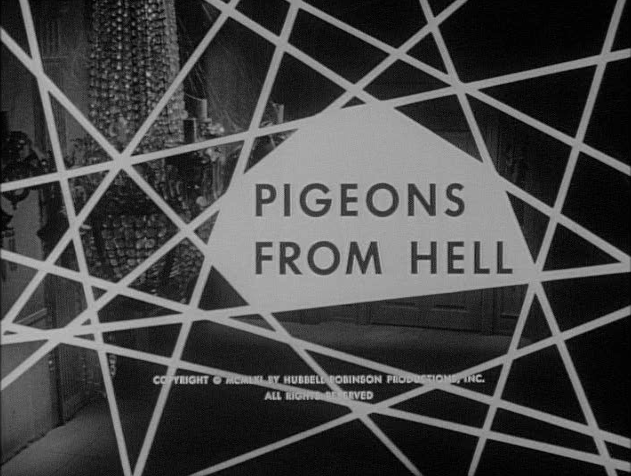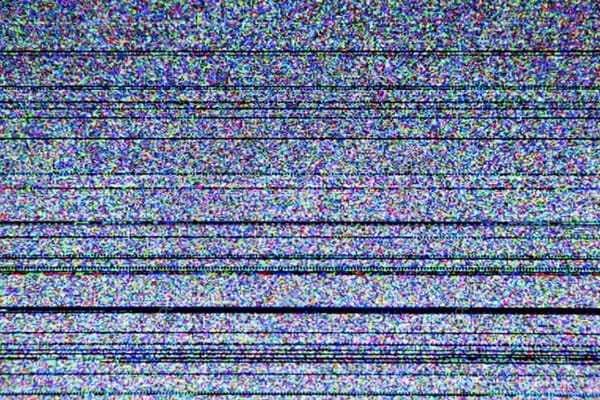Episodes: Thriller's "Pigeons from Hell" and the eternal horror of the human face

(For the next four days, I'm going to look at some scary TV episodes, ideally ones I haven't seen, though I will inevitably have to write about at least one I'm familiar with.)
Horror TV has always understood one thing by virtue of simple necessity: Few things are so scary as the human face.
A lot of television is built atop the trusty old close-up, the moment when an actor's face reacts to something else that's happening, or when he has an emotional pivot in an important scene.
Some of this is because of the intimacy of television. Even on our modern big-screens, we're entering a smaller, more sacred space than we would in the movie theater. Where a face projected onto a movie screen feels like a landscape, a face projected on a TV screen feels like an old friend leaning across the table to lower her voice and tell you something she's never told anybody else.
Some of it is budgetary. If you're making The Twilight Zone, and you want to highlight some mysterious goings-on, but you don't really have the money to show it full-on, you can get a great effect by looking at the face of a good actor who's watching it all go down just offscreen. It allows us into their head and helps us imagine their horror.
And some of it is style. Especially in its earliest days, television was an awkward combination of three other media — film, radio, and theater — where the fact that the three didn't always overlap was mostly waved away. The close-up is a mode that plays with the strengths of all three. It's inherently cinematic (you can't get this close on the stage, or even see someone on the radio), but it also invites us into the actor's realm in a way that is really only possible on the stage. And the monologue whispered in close-up is as close as TV gets to radio. It's a static shot, really, relying on words to carry the day.
I thought about this while watching the absolutely terrifying final act of "Pigeons from Hell," a late first-season episode of the '60s horror anthology Thriller. (You, too, can watch it on YouTube, right here, if you don't mind ad breaks that seem scattered throughout at random and/or the questionable legality of the whole enterprise.) Said final act involves a young man and older sheriff running around a seemingly haunted plantation, then reacting to all of the weirdness around them, which often takes the form of seemingly possessed pigeons. (The truth is a bit more complicated.) By the time we get to the reveal of the film's true "villain" (also a reveal handled in close-up), we're utterly detached from reality. And so much of this is sold by watching the actors' reactions.
Thriller started its life as a series of straightforward suspense adaptations, but it overlapped a bit much with Alfred Hitchcock Presents and didn't have a natural niche. Presumably since Boris Karloff was hosting, the show took a hard left turn into horror, and its pinnacle was this, an episode that still packs an eerie punch over 50 years later. (For more on the history of Thriller, check out Stephen Bowie's excellent piece at The A.V. Club.)
What "Pigeons from Hell" director John Newland understands is that so much of this episode can be done via suggestion. Yes, there are outright horror moments, like a creepy zombified version of a man steadily walking toward his brother, axe held aloft, or those enormous flocks of birds, but the episode gains much of its raw power from the feeling it possesses that things are simply slipping off their axis, that reality has completely gone out of its gourd.
The episode is based on a short story by Robert E. Howard, and it's firmly situated in the Southern Gothic tradition, which means that the true horrors of the story aren't buried in the present, but in the past, dusty secrets waiting to be uncovered, cleaned up, and propped up on their dead feet. Truth be told, the scenes where the characters learn of what animates (and I mean literally animates) the plantation's horrors are a bit creaky, filled with exposition and largely stopping the momentum of the story in its tracks. But then they go back in pursuit of a solution, and everything begins crumbling again.
A lot of horror is like this. It's about a thing that went wrong once, and the ghosts and spirits still exist because they want to put that thing right. Most monsters have singular, symbolic obsessions, and in the bones of a plantation, those singular, symbolic obsessions take on a much greater thematic weight than they usually might.
Thus, holding so long on all those horrified faces captures, in a way, the audience's own complicity in what's happened. The South of the 1960s was a very different place from the one it is today, and even if racial politics are at the very back of this story's mind, they're still there. Wandering into this space, in the dark, is to be forced to face this country's original sin and not be able to blink.
The pigeons, always around, are a reminder too. One or two of them, and you don't notice. They're the background noise of everyday life. But when they start to flock and stalk, it's all you can think about. The things that seem most mundane often aren't.
--
Episodes is published daily, Monday through Friday, unless I don't feel like it. It is mostly about television, except when it's not. Suggest topics for future installments via email or on Twitter. Read more of my work at Vox Dot Com.




